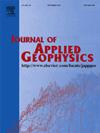High-order pseudo-random signal is gradually being applied in controlled-source electromagnetic (CSEM) exploration. In contrast to the conventional single-frequency sweep mode, the high-order pseudo-random signal enables simultaneous transmission of multiple frequencies. However, estimating a fixed acquisition time based on observed noise levels often results in poor adaptability for high-order pseudo-random signal, which only require reception of one set of waveform. In this study, we presented an estimation method for acquisition time for CSEM with high-order pseudo-random signal using an improved logistic function. The improved logistic function was proposed to introduce a time-decay factor into the governing equation for the first time. By considering the transformation rule of noise statistical characteristics with time, the specific parameters of the function have been determined to better describe the dynamic evolution process of the signal quality. The effective frequencies were extracted at various acquisition times based on the noise evaluation number, and the resulting quantity of effective frequencies was used as the fitting target. Guidance for the fieldwork was determined based on the average time of the saturation period, in accordance with the properties of the function. The reliability of the improved logistic function was validated through a transmission current data simulation. The proposed method was demonstrated through the measured data from both strong and weak interference areas.


